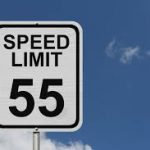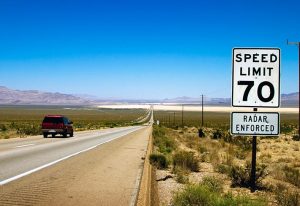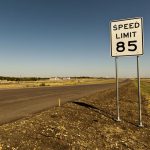 As automobiles became commonplace…or at least more so than they had been, people began to realize that there needed to be some controls on their usage…specially in the area of speed. Most people know that is a car or other vehicle can go fast, there will always be someone out there, who wants to push the envelope and see just how fast it will go, throwing caution to the wind. With increased speeds would also follow, increased numbers of accidents. There would need to be some rules to follow.
As automobiles became commonplace…or at least more so than they had been, people began to realize that there needed to be some controls on their usage…specially in the area of speed. Most people know that is a car or other vehicle can go fast, there will always be someone out there, who wants to push the envelope and see just how fast it will go, throwing caution to the wind. With increased speeds would also follow, increased numbers of accidents. There would need to be some rules to follow.
There were already speed limits in the United States for non-motorized vehicles. In 1652, the colony of New Amsterdam, which is now New York, issued a decree stating that “[N]o wagons, carts or sleighs shall be run, rode or driven at a gallop” at the risk of incurring a fine starting at “two pounds Flemish,” or about $150 in today’s currency. In 1899, the New York City cabdriver Jacob German was arrested for driving his electric taxi at 12 miles per hour, but did the prior law really apply electric cars? It was becoming more and more obvious that some sort of legislation was necessary to ensure the safety of those operating these new machines, and those around them. So began the path to Connecticut’s 1901 speed limit legislation. Representative Robert Woodruff submitted a  bill to the State General Assembly proposing a motor-vehicles speed limit of 8 miles per hour within city limits and 12 miles per hour outside. While the law passed in May of 1901 specified higher speed limits, it required drivers to slow down upon approaching or passing horse-drawn vehicles, and come to a complete stop if necessary to avoid scaring the animals. I can’t imagine some of the restrictions listed there, because people would be stopped more than they were driving, but you have to start somewhere, and Connecticut was that starting point, when, on May 21, 1901 it became the first state to pass a law regulating motor vehicles, limiting their speed to 12 miles per hour in cities and 15 miles per hour on country roads.
bill to the State General Assembly proposing a motor-vehicles speed limit of 8 miles per hour within city limits and 12 miles per hour outside. While the law passed in May of 1901 specified higher speed limits, it required drivers to slow down upon approaching or passing horse-drawn vehicles, and come to a complete stop if necessary to avoid scaring the animals. I can’t imagine some of the restrictions listed there, because people would be stopped more than they were driving, but you have to start somewhere, and Connecticut was that starting point, when, on May 21, 1901 it became the first state to pass a law regulating motor vehicles, limiting their speed to 12 miles per hour in cities and 15 miles per hour on country roads.
Immediately following this landmark legislation, New York City went to work to keep up, and introduced the world’s first comprehensive traffic code in 1903. Adoption of speed regulations and other traffic codes was a slow and uneven process across the nation, however. As late as 1930, a dozen states had no speed limit, while 28 states did not even require a driver’s license to operate a motor vehicle. Rising fuel prices contributed to the lowering of speed limits in several states in the early 1970s, and in January 1974 President Richard Nixon  signed a national speed limit of 55 miles per hour into law. These measures led to a welcome reduction in the nation’s traffic fatality rate, which dropped from 4.28 per million miles of travel in 1972 to 3.33 in 1974 and a low of 2.73 in 1983.
signed a national speed limit of 55 miles per hour into law. These measures led to a welcome reduction in the nation’s traffic fatality rate, which dropped from 4.28 per million miles of travel in 1972 to 3.33 in 1974 and a low of 2.73 in 1983.
Concerns about fuel availability and cost later subsided, and in 1987 Congress allowed states to increase speed limits on rural interstates to 65 mph. The National Highway System Designation Act of 1995 repealed the maximum speed limit. This returned control of setting speed limits to the states, many of which soon raised the limits to 70 mph and higher on a portion of their roads, including rural and urban interstates and limited access roads.


Leave a Reply